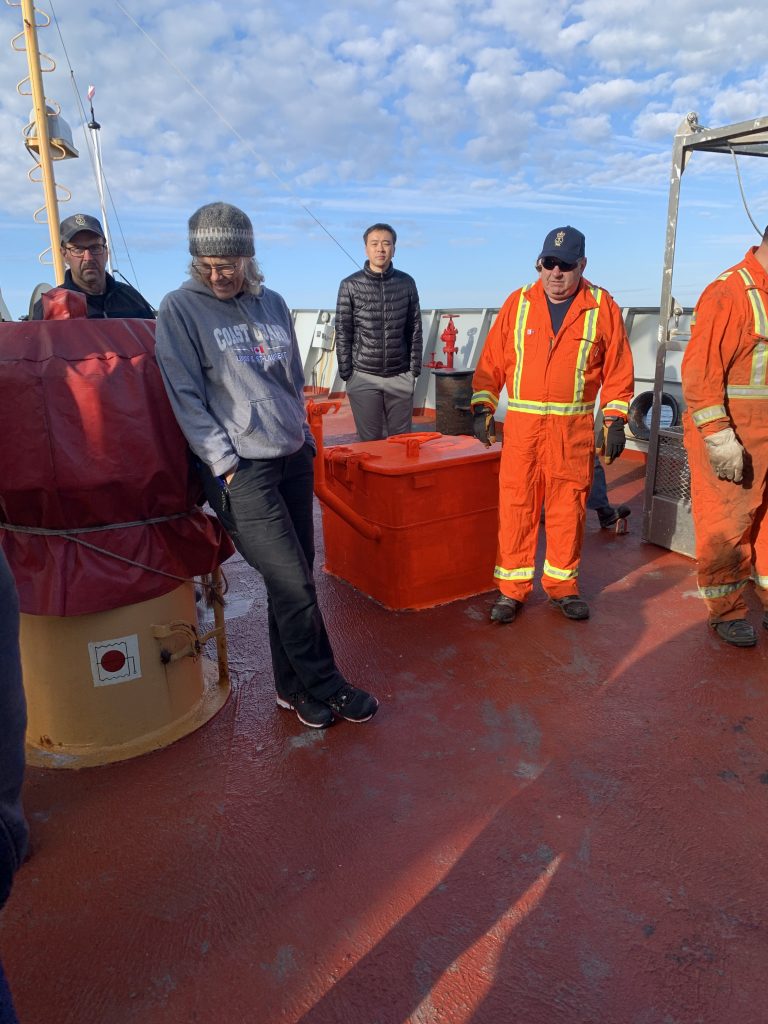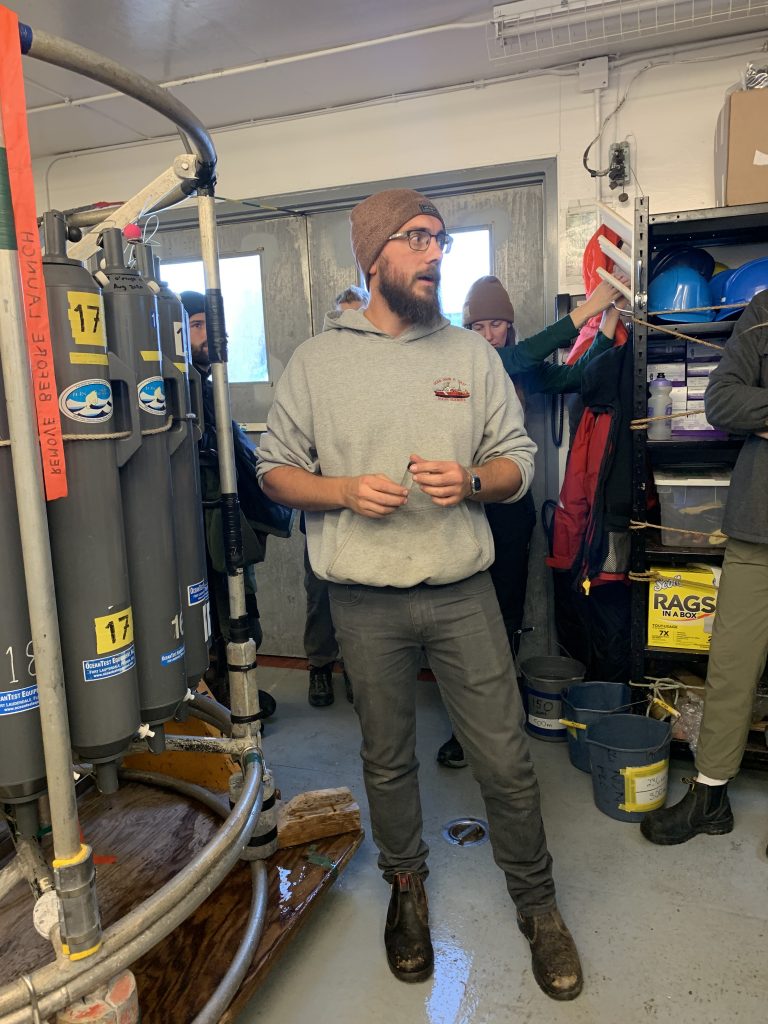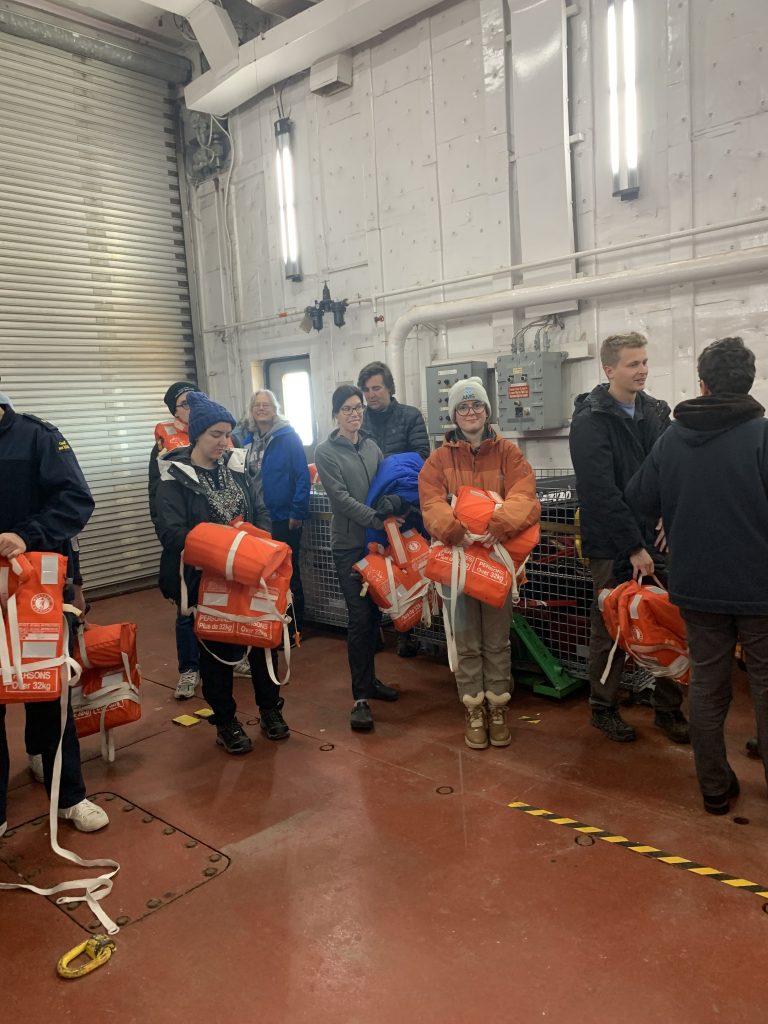Dispatch 2: Preparing for Science Operations
Ashley Arroyo
September 16, 2023
Dispatch 2: Preparing for Science Operations
We are still steaming (at a speed of about 15 knots) through the Canadian Archipelago towards our first science station, with an estimated time of arrival at around midnight tonight. The science crew took this time to become acquainted with safety protocols and procedures to ensure that we are prepared to act in case of emergencies. After lunch, each member of the science crew took turns trying on emergency suits, which are rubber outfits that provide skin protection and warmth in the event we must abandon ship and end up floating in the freezing Arctic waters. Once everyone was finished practicing getting into the emergency suits, Co-chief scientist Sarah Zimmermann led a meeting for the watch standers to give an overview of CTD (Conductivity-Temperature-Depth) operations and water sampling procedures to be ready for the upcoming science station. Afterwards, we went up to the sampling room for a tutorial on how to sample various water properties from the rosette once the cast is complete (these will all be described in a future dispatch). The crew also instructed us on safety hazards we might encounter during these operations (for example, falling overboard, tripping over raised sections of metal – “make sure you lift up your feet when you walk!” – stay away from live wires, and all other kinds of hazards!).
After supper, the fire alarms sounded for a planned fire and lifeboat drill. Everyone on board promptly grabbed their life jackets, flashlights, warm gear, and headed to the helicopter hangar. After a roll call, we made our way to our respective lifeboats, and the crew went through what would happen in an emergency in which we would need to board the lifeboats. Interestingly, the first job of the nurse in the lifeboat is to distribute mandatory sea-sickness medication to everyone. Now that we are all equipped to operate safely onboard the Louis, we are ready to commence science operations in a matter of hours at the first science station!


